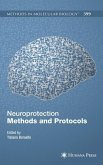Neuroprotection is a topic of great importance in current neuroscience, both basic and clinical. The incidence of age-related neurodegenerative diseases could be expected to rise dramatically in the future owing to an aging population. Consequently, finding the means of retarding or preventing the progression of such diseases becomes increasingly important. This book focuses on basic perspective on neuroprotective approaches and scientists well recognized for their work have contributed chapters to this volume. Although findings on neuroprotection in the different pathologies become more and more frequent and detailed, it can be difficult for researchers to orient themselves in such a complicate field. For this reason, this book describes basic science discovery and the application of such research within different laboratories leading to the development of neuroprotective protocols. The main aim of this volume is thus to give an overview of methods used to study neuronal death and neuroprotection and to offer a really comprehensive step-by-step method in order to make clear not just the procedure but also the principles behind the use of it. At this purpose, the "Notes" section of each chapter represents a useful tool to solve technical problems and to help in reproducing the described methods.
From the reviews: "Research in neuroprotection is essential for the development of therapies for stroke and neurodegenerative diseases. This book reviews research methods currently used for prevention and slowing of central nervous system degenerative disorders. ... Neurologists, neurosurgeons, and neuroscientists interested in research in neuroprotection are the main audience for this book. This is a comprehensive approach to research in neuroprotection. ... the book is well written and structured with no drawbacks. ... a good book for neuroscience and neurological libraries." (Celso Agner, Doody's Review Service, December, 2007)








